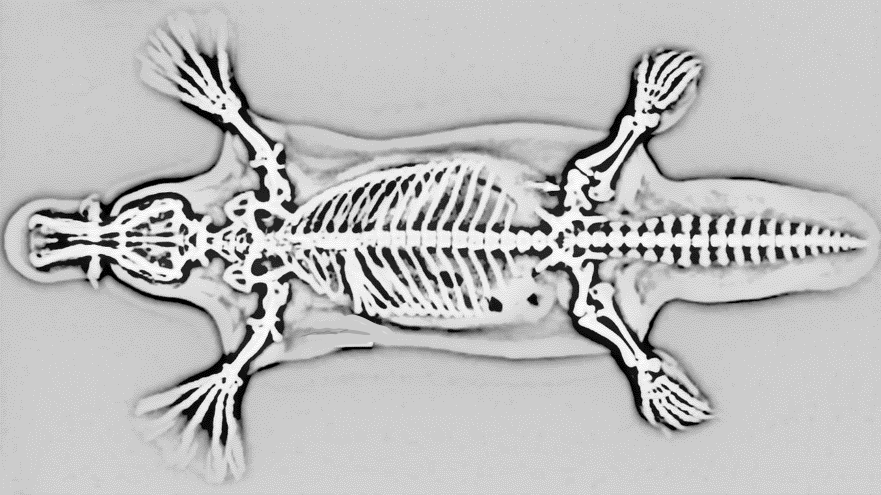What does perfect Asset Management look like? What’s at the top of the mountain we’re climbing?
And what’s a metaphor between friends?

But to some of us it’s more a windy, winding road, over yet more hills, where we sometimes see part of the road up ahead, but never glimpse the end.
Why does this matter? Having recently faced a virtual room full of people saying they would know what to do next, if only someone could describe the end state for them: as though Asset Management is an accomplishment, something you can complete. Done, checklist all checked, and move on?
In contrast, is there a destination for, say, engineering? Although many engineers may not examine what they believe, they surely think of engineering more as a state of mind, a way of thinking, rather than something that gets finished. (And who even has a vision of HR?)
We could describe the top of our mountain as the point where everyone takes it for granted that we think longer term, whole system and lifecycle, use information wisely, and truly embrace uncertainty.
But I don’t think that’s what the metaphor betrays. I think it’s more ‘when we have a complete asset inventory and a strategy for every class’ and can stop thinking about them and move onto something more fun. The way some, at least, appear to think a check the box approach to ISO 55000 is what we need, or even the point.
But, you know, it’s also whether fun to us means continual discovery, the thrill of not knowing and then learning – or getting back to my desk to fill something in.
Roll on, rolling road!
Or, making sure we always ask who truly benefits by a new infrastructure project.

Infrastructure investment always attracts several groups with particular interest in the projects themselves.
There are the construction companies where it is all upside (work for them) and no cost, at least to them. They probably won’t even be around when the assets are in use.
There are internal project engineers who want cool things to build, whose interest in the assets once constructed can be minimal. That is to say, they don’t necessarily worry about handover of as-builts or how well the assets work after ten years. Their job is to do shiny news things!
And of course there are developers, whose interest extends to how much they can exploit the infrastructure – and with a long, long history of lobbying to the point of corruption.
I am not sure if the people who fund it always think about this. Assuming, of course, they have not already been captured by the lobbying and mindsets of construction companies and developers.
A lot of people like to see money invested in their neighbourhoods, at least until the construction noises start.
So, wearily, we have to take this on as infrastructure Asset Managers and stewards.
Like mad-eyed prophets calling out in the wilderness, and not necessarily honoured in our own country, nobody maybe wants to hear: Cui Bono?
My boss has been heard to say that when they started the company in 1997, he assumed that within a few years we would have figured everything all out and would just be applying the Asset Management manual. Instead, we learn something new on every project… Twenty five years on, that’s certainly true for me.

My old colleague John Lavan described what we have to do as tackling problems, not solving puzzles.
A puzzle is (in his terms) something where you already know what you have to do to solve it. It’s a rule-based game, like school-level mathematics. Apply this methodology and it will come out right.
Whereas we are faced with problems, where we don’t necessarily know what to do, or if there is a good solution.
As soon as we work out a useful approach on something, we’re faced with having to evolve it further. That is, even if we’re lucky enough to have a good way to start.
Fellow Talking Infrastructure Board member Lou takes this further. There are puzzles, which don’t resemble Asset Management, but perhaps some engineers still wish for; problems, which seems to be our AM world; and predicaments, where there maybe isn’t a solution at all.
I’d like to think building an asset inventory is a puzzle that we already know how to solve. Plenty of individuals don’t yet know, of course, but that feels like just an issue of communication.
On the other hand, what’s an effective strategy for Asset Management in a particular organization? We know the principles (alignment to corporate targets, the Six Box Model of elements), but that’s merely the opening tool kit. Making Asset Management business as usual is a problem, still, for just about everyone. Too many variables and different nuances.
Old age is a predicament. And as for climate change? Maybe, given human psychology, it’s a predicament, not simply a problem.

“What’s the first step to a good Strategic Asset Management Plan (SAMP)? A bad SAMP…”
My ex-colleague Ark Wingrove’s saying has resonated with clients since he first coined it. You do not have to wait for perfection; the important thing is to start, knowing you can improve as you go.
It works not just because it’s true. Just having someone tell you you won’t get everything in Asset Management perfect first time liberates us to try. Otherwise – and this surely tells us something about the asset culture we pick up, and need to change – we get frozen in the headlights of needing to be right.
It’s a profound truth of AM that you will never know enough about the future; and yet you still have to have a strategy, you still have to plan, you still have to make decisions that matter. And so inevitably we will get some important things wrong.
The approach that the AM documents and processes we produce are all iterative is, of course, built into the diagrams, the 6 Box Model and the flow of ISO 55000, continuous improvement and the ’learning loop’ of Plan-Do-Check-Adapt. The idea that, above all, we can’t leap straight from muddle to highly sophisticated Asset Management Planning has long been recognised in Australasia. We have to build, step by step, our planning evolving with our increasing understanding.
But it just struck me that it’s not simply how we improve things as we know more. The real blocks are thinking we know more than we do at the start, and the fear that we will be exposed for not knowing enough – the toxic aspects of being an expert.
Years ago Penny Burns came in to take my Sydney team through scenario planning. The real achievement of this was to move everyone away from their confidence. From believing they could ever be certain about the future.
In an exercise around understanding our levels of uncertainty in risk training this week, someone asked – tongue in cheek – how we could ‘win’.*
The urge to be right is natural, I guess, but it also goes with all sorts of baggage. That we won’t even start unless we can be certain. That it is better not to try than to run the risk of being wrong.
As though, for example, a strategy for Asset Management is a test we have to pass.
The principle of evolving, getting better as we go but never reaching 100% certainty. What examples of positively ‘embracing uncertainty’ have you seen in practice?
*Calibration training based partly on the work of Douglas Hubbard, see his The Failure of Risk Management. If you have never come across this, aiming to show off that you’re right that will ensure you don’t get it right. (And even telling people this doesn’t help them, at least the first time around.)

From Bill Wallsgrove
AI continues to not quite to get what a platypus is – just as many people still don’t understand what Asset Managers do.
I could tell two miserable current stories of Human Resources not getting it. A major power utility with ISO 55000 certification where HR led a structure reorganisation, and failed to include any Asset Management (and the saddest part was how much effort the AM team had put into trying to bring HR along with them). A transit agency where HR insist they know better how to recruit good Asset Managers – again, after years of effort from the AM team on what to look for.
But lamenting HR failures is like shooting fish in barrel: too easy.
And we are all still working it out.
For example, looking at AM teams where they have really done interesting things, I see how much difference ‘professional’ information skills have made. The most impressive Asset Managers I know include a librarian, an ex-military intelligence veteran, and a teacher of data science. I wonder if good Asset Management is even possible without information nous.
And the perennial questions of whether you can learn to ‘embrace uncertainty’, or think strategically. Are good Asset Managers born, not made? I don’t want to believe so.
I certainly don’t have it all and have depended through my career on other people with complementary skills to mine.
As the Institute of Asset Management (IAM) starts its review of its Competency Framework, to update and expand the original work led by Chris Lloyd, I get the feeling more than ever that it isn’t just a matter of hiring people with certain skills, but of encouraging those who think about the world in particular ways.
I’m on the Competences Steering Group for the IAM. This is a plea for input: what is your experience on the most important skills, experience, aptitudes, attitudes for good Infrastructure Asset Management?
What have we learnt about good people in the nearly 40 years of Asset Management?

I work with a variety of organisations in several countries who are attempting to implement good Asset Management. Some are just starting out. A few are quite sophisticated. And one or two are even tackling the question of infrastructure decision making in our communities.
I was struck again this month by how hard this all sometimes seems.
Organizations who are just starting out have interesting challenges, of course, including no-one much understanding what AM is and, usually, a lack of resources. One half time resource without much authority, for example, can’t do much to radically transform their business.
But surely it doesn’t have to be that hard, conceptually, to sort out a basic asset inventory, classic Wave 1? Plenty of organisations have already sorted that – it is, as my old colleague John Lavan put it, a puzzle, for which there is an answer already known, not a problem we haven’t yet solved.
And yet many people just don’t seem to have good sense about asset information. And want to reduce the problem to basic IT, which they also don’t do very well. (I am feeling a bit grumpy about this: can’t someone please donate good-enough asset hierarchies and principles into the public domain, or even write the book so no-one ever has to reinvent those particular wheels? TJ, Dave Ulrich, I am looking at you guys here.)
Wave 2, strategic AM and better all-round asset decision-making also depends on something rather more than technology – and that, I am sure, is why organisations struggle. It involves people! Culture! And politics, small p, and sometimes Big P too!
Where Asset Management is effective, infrastructure Asset Managers can then get caught up in Wave 3. And however smart and well-resourced they are, it’s big.
A great current example is electric buses, something the US Federal government wants to throw money at as part of ‘decarbonization’ of transport. But the questions of how, and why, to invest with all the interconnecting issues of the infrastructure for the buses themselves, performance and customer satisfaction, and whether this will even give the right carbon-reduced answer…
Asset Managers get it. But they are a small drop in a large ocean of greed and love of shiny new things.
I asked a buddy who’s simply caught in too many stupid business decisions in a utility whether he might just bring in some additional resources to tackle more of them… But he said, quite rightly, where from? Who gets it, and all the diplomacy, strategic thinking, experience, intelligent use of what data there is that is that’s required, all at once?
ISO 55000 doesn’t help it all that much.
In a new series of blogs, I want to look with your input at some of the challenges we see in every Wave. Of course we love challenges. But I also see rather too many Asset Managers at every stage drowning in the sheer size of the job.
Series to include: asset information, risk, networking, attitude change, and more.

© 2023 Bill Wallsgrove
Some of my best friends are AI – in literature, at least. Ships Behaving Badly in Iain M Banks’ Culture novels for example, which led a human friend to say they couldn’t make a worse job of running the world than humans.
I am sad to say I expect less in reality, and any technology under the control of the rich few. But should we fear conspiracy or cock-up more, I wonder?
I seem to have become a luddite about ‘smart technology’ in managing infrastructure, delivering less and threatening more than enthusiasts are claiming. Systems too complex to manage, or to understand the potential implications of; and products that don’t offer much except big price tags.
But I had to smile at this image, the first result of my brother using an AI art app to create images for me of duck-billed platypuses.

Photo 63254580 © Liliia Epifanova | Dreamstime.com
2023: surely the year for harder questions about the impact of our infrastructure on biodiversity.
For example, researchers in Idaho built a fake road to test out the impact of freeway noise on migrating birds.
“A third of the usual birds stayed away… those that stayed paid a price,” writes Ed Yong in his fabulous book Immense World on animal senses. The noises drowned out the sounds of their predators, so the birds had to spend more time looking for danger and less for food, so they put on less weight and were weaker for their migrations – which take every bit of energy the birds have.
And this didn’t include actual road effects from headlights, exhaust fumes, polluting run-off.
As Ed Yong says, more than 83% of continental USA lies within a kilometre of a road. There is nowhere else for the birds to go.
We have options to do something about this in our infrastructure, in a year we’re meant to be ‘building back better’.
Just replacing blue or white LEDS with red in, for example, parking lot lighting cuts down the impact of night light on insects. Sound-absorbing surfaces and barriers; slowing down traffic; quieter vehicles – all can immediately reduce noise pollution for animals such as owls and mice who depend on sound to catch or avoid being caught.
If 80% of humanity live under light-polluted skies and two-thirds of Europeans live in the noise equivalent of constant rain, it’s not great for people. But what Ed Yong brings out so brilliantly is how often we don’t even think about the different and miraculous sense worlds of other species, of whales and manatees and frogs and birds, and how very much worse it can be for them.
Is this the year to start taking seriously a problem we’ve only just begun to realise?
Immense World, Ed Young, 2022 – how other animals sense is truly mind-blowing.

Photo 247485510 / Asteroid Hitting Earth © Elen33 | Dreamstime.com
Don’t Look Up – as opposed to Now, or Back in Anger – is a 2022 witty parable on the climate crisis in which a variety of movie stars play more or less against type. It does not say much about infrastructure, except to destroy it all with an asteroid, but I was struck by the stupid economics.
When the Elon Musk-alike (Mark Rylance!) says how many trillions of dollars’ worth of rare and valuable metals are contained in the asteroid, one of the heroes mutters about how that isn’t going to mean anything when it destroys the Earth.
But I was struck by the very specificity of the pricing. As though price is an absolute, unaffected by destruction, or anything to do with other humans. Even without total destruction, surely living through the threat and even partial environmental chaos might change people’s enthusiasm, one way or another, for buying yet more mobile phones?
The Musk-alike means how many dollars he could get for the stuff in today’s market, not the value; it’s left to someone else, a corrupted government advisor, to suggest it’s enough money to cure hunger and poverty, but you know he’s just mouthing it. (And you can’t eat money.)
The trillionaire simply plans to be trillions richer. He has no sense of who will be around to buy from him. The ‘stuff’ is enough.
The dollars have some kind of fabulous independent existence.
Rather like the idea of how many dollars infrastructure construction generates. We know for sure lots of construction means lots of money for construction companies, but the value it creates is rather less easy to work out.
Both of these things – the $ worth of metals in an asteroid that probably can’t be used, the $ worth of building infrastructure any old place – are, I think, what some people call fetishes. Inanimate objects worshipped for supposed magical properties.
Out of context, we’re not even trying to work out what’s actually of value. It really is very stupid economics.
PS I recommend the film

The peculiar antics of Elon Musk in late 2022 prompts, once more, the question of whether tech billionaires are really the best model for our heroes.
During Covid, plenty of people realised how dependent we are on carers, paid perhaps a millionth of what Musk pays himself. We clapped for a very different kind of heroics during lockdown.
Infrastructure is an intriguing mixture: it’s technology to keep our societies going, not primarily to make money. Managing it well involves caring for stuff. We are not carers in the traditional sense – and many of us are paid better than nurses or teachers.
Of course, technology innovation and looking after other people are very heavily gendered in our society: stereotypically, techies are male, carers are female. Making an obscene amount of money from exploiting innovation is masculine heroics; working till you drop caring for someone else is feminine heroics. (There are plenty of men in caring professions, but that doesn’t stop the stereotype.)
Sometimes I feel we’re trying to work out what kind of heroes we want to be in asset management. There are plenty who fancy the innovation techie route, getting all excited about ‘digital transformation’ (cf. the call this week for papers by ReliabilityWeb on the subject, for example) and, probably, the well-founded belief this is an easier way to make money. There are others, more equitably spread between women and men, who are sure it’s mostly about people.
We shouldn’t be particularly surprised to see crude stereotypes echoed in our own profession. A colleague recently described the problem of dominance in AM by “fat middle aged white men” (he said he was talking about himself, and the fat bit was a joke) – a dominance that doesn’t thrill me. I find myself more alarmed by the failure to learn our own lessons about what it takes to manage infrastructure, and rush into anything techie. As though, this time, technology innovation will sort out all the problems. Including the tiresome need to think about people.
But, then again, it’s surely the mix, the dynamic tension, between technology and caring which actually appeals to many of us; that brought us into asset management in the first place.
In their excellent book The Innovation Delusion, Lee Vinsel and Andy Russell challenge both innovation and heroes as ideals – and propose instead the maintenance mindset and how to sustain our “human-built world”. I think this is partly what they mean, this interesting mix.
PS Their Maintainers are still going strong, by the way, with some assistance from the Alfred P. Sloan Foundation and the Siegel Family Endowment – see www.themaintainers.org

Recent Comments